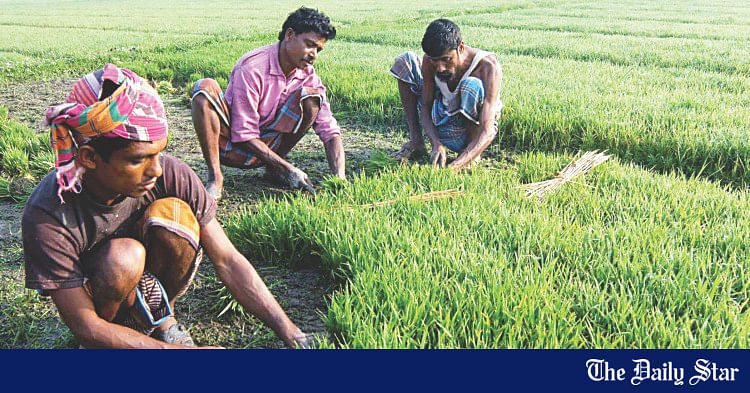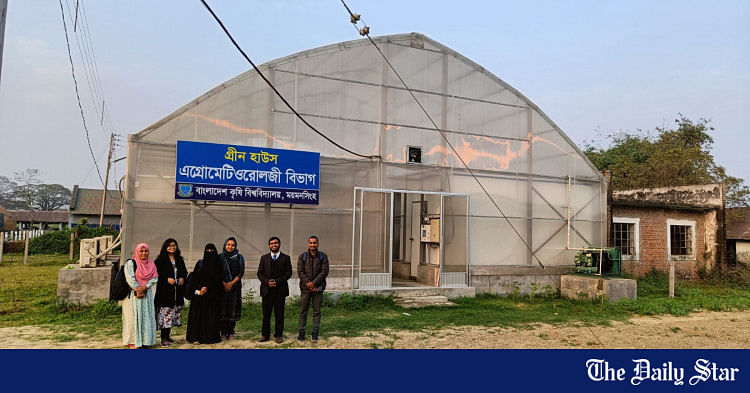Saif
Senior Member
- Joined
- Jan 24, 2024
- Messages
- 15,898
- Likes
- 7,990
- Nation

- Axis Group


Making agricultural commodities comply with WTO standards
As an emerging producer of agricultural commodities, the need for protecting Bangladesh's indigenous plants and plant products from foreign invasive insects and pests cannot be overemphasised. Similarly it is equally important to ensure that agricultural exports from Bangladesh are free from plant
Making agricultural commodities comply with WTO standards
FEPublished :
Feb 16, 2024 21:53
Updated :
Feb 16, 2024 21:53
As an emerging producer of agricultural commodities, the need for protecting Bangladesh's indigenous plants and plant products from foreign invasive insects and pests cannot be overemphasised. Similarly it is equally important to ensure that agricultural exports from Bangladesh are free from plant species and pests that are harmful for importing countries. The necessity for such measures has gained paramountcy with the entry of Bangladesh's agricultural products into the billion-dollar-earner club in FY 2021-2022. It may be recalled that in FY22, Bangladesh earned USD1.16 billion from exporting agricultural goods and processed foods, according to the Export Promotion Bureau (EPB). In the fiscal (FY21), too, for the first time in the country's history, foreign currency receipts from agricultural export touched the billion-dollar mark. It has, therefore, become urgent that the country's agricultural exports in the global market are maintained sustainably.
To do so, Bangladesh must meet the World Trade Organization (WTO)'s Sanitary and Phytosanitary (SPS) Agreements. Notably, the Agreement on the SPS Agreement came into effect with the establishment of the World Trade Organization (WTO) in 1995. The SPS Agreement explicitly recognises the right of governments to take measures to protect human, animal and plant health as long as these are based on science. The question of adhering to science arises here because there is also the risk of arbitrary application of this protective measures against similar plant products of foreign origin in a discriminatory manner. So, in line with the WTO's SPS Agreement, the government first enacted the Bangladesh Plant Quarantine Act 2011 followed by Bangladesh Plant Quarantine Rules 2018. But to update the regulations so enacted to meet international standards, the government is required to amend the original Plant Quarantine Act 2011 for regulation of international transport of plant and plant products. However, at the moment, there is no full-fledged authority to oversee if the Act and the Rules thereof (adopted later) are being observed in their exact text and spirit. As a makeshift arrangement, the director of the 'plant protection wing under the department of agriculture' is functioning as the national quarantine authority. The good news is that the government has already prepared a draft proposal for constitution of a dedicated body for the purpose, held discussions among relevant government bodies and with stakeholders before finalising what it termed the National Plant Quarantine Authority.
The envisaged regulatory body would, among its other functions, prevent the introduction of quarantine pests into the country. Obviously, that would require the plant quarantine stations at the country's ports of entry to be extra-cautious as well as highly efficient in their job. Similarly, they have to be equally adept at meeting the phytosanitary requirements (relating to plant health) including issuance of phytosanitary certificates following the requirements of the countries importing Bangladeshi plants in line with international agreements. There is always the risk of an outbreak of plant diseases at home, the quarantine authority to be established would also have to look into that.
The emphasis on maintaining high quality of Bangladesh's agricultural export is obviously part of expanding its export basket. In this connection, the government plans to export US$3.0 billion worth of agricultural goods this year and hopes to raise it to US$10 billion in the near future. Let the proposed National Plant Quarantine Authority be foolproof enough to meet international standards and also be equal to the nation's ambition to become a regional agricultural product hub.
To do so, Bangladesh must meet the World Trade Organization (WTO)'s Sanitary and Phytosanitary (SPS) Agreements. Notably, the Agreement on the SPS Agreement came into effect with the establishment of the World Trade Organization (WTO) in 1995. The SPS Agreement explicitly recognises the right of governments to take measures to protect human, animal and plant health as long as these are based on science. The question of adhering to science arises here because there is also the risk of arbitrary application of this protective measures against similar plant products of foreign origin in a discriminatory manner. So, in line with the WTO's SPS Agreement, the government first enacted the Bangladesh Plant Quarantine Act 2011 followed by Bangladesh Plant Quarantine Rules 2018. But to update the regulations so enacted to meet international standards, the government is required to amend the original Plant Quarantine Act 2011 for regulation of international transport of plant and plant products. However, at the moment, there is no full-fledged authority to oversee if the Act and the Rules thereof (adopted later) are being observed in their exact text and spirit. As a makeshift arrangement, the director of the 'plant protection wing under the department of agriculture' is functioning as the national quarantine authority. The good news is that the government has already prepared a draft proposal for constitution of a dedicated body for the purpose, held discussions among relevant government bodies and with stakeholders before finalising what it termed the National Plant Quarantine Authority.
The envisaged regulatory body would, among its other functions, prevent the introduction of quarantine pests into the country. Obviously, that would require the plant quarantine stations at the country's ports of entry to be extra-cautious as well as highly efficient in their job. Similarly, they have to be equally adept at meeting the phytosanitary requirements (relating to plant health) including issuance of phytosanitary certificates following the requirements of the countries importing Bangladeshi plants in line with international agreements. There is always the risk of an outbreak of plant diseases at home, the quarantine authority to be established would also have to look into that.
The emphasis on maintaining high quality of Bangladesh's agricultural export is obviously part of expanding its export basket. In this connection, the government plans to export US$3.0 billion worth of agricultural goods this year and hopes to raise it to US$10 billion in the near future. Let the proposed National Plant Quarantine Authority be foolproof enough to meet international standards and also be equal to the nation's ambition to become a regional agricultural product hub.






































